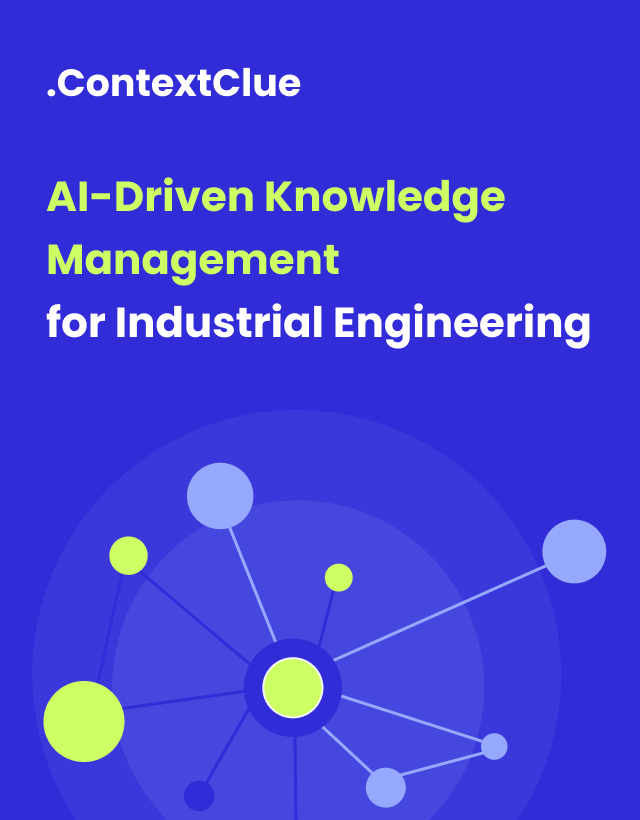
Business benefits of AI agents
AI Agents Transform Business Operations
Traditional AI tools, such as chatbots or content generators, are useful for quick, one-off tasks – writing an email, summarizing text, or answering a question. But they’re reactive, stateless, and limited to what you ask in the moment. If you’re looking to automate real work, reduce manual effort, and scale processes intelligently, you need more than that.
An AI agent is built for action, not just answers. It plans, decides, and executes multi-step workflows with minimal input. It connects to your tools, remembers your preferences, and works independently – making it a valuable collaborator across your business.
An AI agent can:
- Automate complex workflows: Instead of just summarizing a report, it pulls data from internal systems, analyzes it, creates the report, emails it to your team, and schedules a follow-up.
- Take initiative: It monitors project deadlines, sends reminders, reassigns tasks, and keeps stakeholders updated – without being told.
- Integrate with your systems: It connects directly to tools like CRMs, databases, email platforms, or APIs and acts in real time.
- Learn and adapt: It remembers your formatting preferences, understands past context, and improves its performance over time.
- Ensure security and compliance: It can run in private or self-hosted environments to meet strict data protection requirements (e.g., GDPR, HIPAA).
AI agent doesn’t just respond – it collaborates, learns, and delivers specific outcomes.
AI Agents: A Diverse and Customizable AI Technology
AI agents are not a one-size-fits-all solution. They represent a broad range of technologies with varying levels of intelligence, autonomy, and adaptability – each suited to different business needs, workflows, and environments. This variety enables organizations to deploy tailored solutions that solve specific challenges while meeting technical, operational, and regulatory requirements.
Core types of AI agents:
- Simple reflex agents – These agents act solely based on current input using fixed “if-then” rules. They don’t store any history or learn from experience, making them fast but inflexible. They are best suited for simple, highly predictable tasks such as triggering alerts or enforcing static automation rules.
- Model-based reflex agents – Unlike simple reflex agents, these maintain an internal representation of the environment to track state and make more informed decisions. They are capable of operating in dynamic or partially observable settings, such as real-time monitoring systems or responsive interfaces.
- Goal-based agents – Goal-based agents make decisions by planning the best sequence of actions needed to achieve a defined objective. They are adaptable and able to re-plan when goals or environmental conditions change, making them ideal for tasks like scheduling, logistics, or strategic decision-making.
- Utility-based agents – These agents build on goal-based models by evaluating possible outcomes and choosing the one that provides the highest overall utility. They are used in environments where trade-offs between multiple objectives are required, such as balancing efficiency and safety in autonomous vehicles or financial portfolio management.
- Learning agents – Learning agents are designed to improve continuously by learning from data, experience, and feedback. They are capable of adapting to new environments, evolving use cases, and user behaviors. Common applications include personalization engines, fraud detection systems, and adaptive process automation.
- Hierarchical agents – Hierarchical agents structure their decision-making across multiple levels, allowing them to break down complex tasks into manageable subcomponents. This layered approach is especially effective in large-scale systems like manufacturing automation, robotics, or enterprise IT operations.
- Multi-agent systems – These involve multiple agents working together – either cooperatively or competitively – to solve complex problems or simulate real-world environments. They are used in domains like supply chain coordination, smart grid management, and large-scale simulations.
AI Agents tailored by industry: Real-world use cases
Industry-tailored AI agents are specially designed autonomous systems that deeply understand and operate within the complex workflows of specific sectors. They are built to deliver tangible business outcomes by embedding intelligence into core processes—not just augmenting individual tasks.
Examples include:
- Financial services – AI agents that autonomously monitor trading markets, detect fraudulent transactions in real time, automatically prepare audit-compliant reports, and manage risk – all while adhering strictly to regulatory standards like GDPR or HIPAA.
- Healthcare providers – Agents that coordinate patient data analysis, assist with diagnostics by integrating multiple medical databases, streamline insurance claim processing, and personalize patient engagement—providing continuous learning that improves care quality and compliance.
- Manufacturing & supply chain – Intelligent agents predicting equipment failures from sensor data, automatically scheduling preventive maintenance, optimizing production workflows, and managing inventory with minimal human supervision.
- Customer experience & support – Advanced virtual assistants that don’t just answer FAQs but understand individual customer profiles, autonomously escalate complex issues, route tasks to human agents, and learn from interactions to improve service efficiency over time.
Each industry-specific AI agent (vertical AI agent) acts as a fully integrated digital collaborator – leveraging deep domain expertise, multi-step reasoning, and seamless tool integration – to enhance efficiency, reduce risk, and unlock innovation at scale.
This revision explicitly clarifies that these AI agents are not simple add-ons or generic assistants but purpose-built, autonomous systems enabling sophisticated, secure, and measurable improvements tailored to industry needs and regulations – benefits that general-purpose AI cannot deliver on its own.
Data Security in AI Agents
AI agents manage large volumes of sensitive information as they carry out complex, autonomous tasks across your business. Protecting this data – and maintaining full privacy – isn’t optional. It’s foundational.
- Flexible and secure deployment options – Depending on your needs, AI agents can be hosted in private clouds, on-premises environments, or hybrid setups. This ensures sensitive information stays within your infrastructure and under your control.
- Granular access controls – Like human team members, AI agents follow strict access rules. Only authorized users and systems can view or process sensitive data- minimizing the risk of unauthorized exposure.
- End-to-end encryption and data classification – All data is encrypted in transit and at rest. Sensitive data is clearly classified and managed so agents only access the information required for their tasks – nothing more.
With customizable safeguards, governance controls, and deployment flexibility, AI agents are not a security risk – they’re a reliable and adaptable partner. They enable your business to scale automation and intelligence with confidence, fully aligned with your operational, legal, and strategic needs.
The factors that influence the timeline and cost of AI Agent implementation
The speed and cost at which you can deploy an AI agent and start seeing value depends entirely on the specific requirements and complexity of your project. Rather than promising a fixed timeline or price, it’s important to highlight the key factors that influence deployment duration and investment:
Key factors influencing timeline and cost:
- Integration requirements – Projects that involve connecting the AI agent to multiple or legacy systems typically take more time and resources than those leveraging a single, modern platform.
- Data availability & quality – Clean, well-organized, and accessible data enables faster onboarding. If data preparation or migration is required, this may extend the timeline.
- Customization needs – Highly specialized workflows or custom logic will require more development and testing compared to straightforward or out-of-the-box use cases.
- Volume & complexity of user interactions – Supporting multiple languages, channels, or complex decision trees can impact both cost and implementation effort.
- Regulatory & security considerations – Compliance with data protection regulations or specific industry standards may require additional configuration and validation.
Due to these variables, we always begin with a scoping discussion to understand your unique objectives and constraints. The final price and implementation schedule depend strictly on the scope we define together. Simple pilots or proof-of-concept deployments may be very quick, while larger, fully integrated solutions can require more significant investment in time and resources.
AI agents integration capacities
AI agents can be integrated seamlessly with your existing systems – including CRMs, ERPs, APIs, databases, and cloud platforms – to enhance and automate your current workflows without requiring major changes to your infrastructure. Robust interoperability ensures that AI agents can communicate with a wide range of business applications, enabling actions such as retrieving customer data, updating records, or automating multi-step processes across different tools.
Support for custom integrations means AI agents can adapt to proprietary platforms or industry-specific applications through standard APIs or tailored connectors. This flexibility allows for the orchestration of custom workflows and branded user interactions that reflect your organization’s requirements and branding.
By focusing on integration and interoperability, AI agents serve as a complement to your existing systems, amplifying their value and improving operational efficiency – rather than replacing or disrupting your current environment.
Clients that trusted us





















How We Build Custom AI Agents: Step by Step
We follow a clear, structured process to build AI agents that are not just technically capable but truly useful for your business. Each step is designed to produce a specific outcome, from defining what the agent should do to making sure it works securely in your environment.
Discovery phase: Understanding your needs
We meet with your team to identify which processes the AI agent should automate, what systems it will interact with, and what measurable results you’re targeting (e.g., reduced manual effort, faster response times, better accuracy).
Outcome: A clearly defined business problem, list of target tasks, and success criteria.
Design phase: Use case definition
We define the highest-priority use cases based on business impact and feasibility. We also design the agent’s system architecture – including roles, data flows, tool integrations, and scalability requirements.
Outcome: A use-case roadmap and a detailed technical blueprint ready for implementation.
Data preparation phase: Collecting and cleaning data
We identify all relevant internal and external data sources. Then we extract, clean, label, and anonymize the data to ensure it’s safe, structured, and ready for training or real-time input.
Outcome: A high-quality dataset tailored to the agent’s tasks and privacy standards.
Modeling phase: Model selection and fine-tuning
We choose the right model architecture (e.g., LLM, SLM, hybrid) based on your needs. We fine-tune it using domain-specific data so it understands your workflows, terminology, and priorities.
Outcome: A fine-tuned, task-specific AI model ready to power your agent’s decision-making.
Development phase: Building the agent and integrating systems
We build the agent’s logic, memory, and reasoning capabilities. Then we integrate it with your business systems – such as CRMs, ERPs, databases, or APIs – so it can retrieve data, take actions, and operate independently.
Outcome: A fully functional AI agent connected to your live business environment.
Testing phase: Performance validation and quality assurance
We simulate real use cases, edge cases, and stress conditions. We check accuracy, response time, reliability, and compliance with internal policies. Any issues are corrected before production.
Outcome: A stable, secure agent validated against all functional and business requirements.
Deployment phase: Launch and agent orchestration
We deploy the agent into your production environment. If you’re using multiple agents, we add orchestration logic to manage coordination, prevent duplication, and ensure smooth workflows.
Outcome: A live AI agent (or agent system) working within your operational infrastructure.
Optimization phase: Monitoring, feedback, and improvement
We implement monitoring dashboards and feedback loops to track performance, user behavior, and business impact. Based on this, we retrain or fine-tune the agent regularly to keep it accurate and useful.
Outcome: A continuously improving AI agent that evolves with your data, users, and goals.
Why work with us
AI Experts on board
Finished projects
We are part of a group of over 200 digital experts
Different industries we work with

Recognitions & awards



Technologies that we use
Our technology stack is always tailored to your specific business requirements and project scope. We don't believe in one-size-fits-all solutions, instead, we select the optimal combination of tools based on your data characteristics, performance needs, integration requirements, and scalability goals. Here are the key technologies and frameworks we commonly leverage for Agents development
AI Agents Solutions Various Industries: Use Cases

AI Agents for Aviation
Aviation companies must maintain the highest safety standards while managing tight operational margins, global regulations, and high-value assets. Manual oversight alone is no longer enough to manage risk, optimize scheduling, or reduce downtime across fleets and facilities.
AI Agent solutions:
- Proactive aircraft maintenance: Monitor engine health, avionics, and structural integrity using real-time flight and sensor data to predict component failures before they ground aircraft.
- Crew and flight scheduling: Balance regulatory rest limits, crew qualifications, and real-time disruptions to optimize schedules and minimize delays or crew shortages.
- Regulatory compliance automation: Continuously track maintenance logs, inspections, and operational procedures to ensure alignment with FAA, EASA, or ICAO regulations.
- Turnaround time optimization: Analyze ground operations – baggage handling, refueling, catering, etc. – to reduce idle time and improve on-time performance across airport hubs.
- Passenger experience intelligence: Use historical and real-time data to proactively manage disruptions, automate rebooking, and personalize communication based on passenger profiles and loyalty status.

AI Agents for Automotive
Modern automotive companies face increasing complexity from electrification, connected systems, autonomous driving, and evolving customer expectations. Traditional systems can’t keep up with the need for real-time data fusion, predictive insights, and process automation across development, production, and aftersales.
AI Agent solutions:
- Autonomous vehicle monitoring: Analyze sensor and telemetry data in real time to detect anomalies, predict component failures, and optimize vehicle behavior in dynamic environments.
- Predictive warranty management: Identify patterns in repair histories and vehicle usage that indicate potential warranty issues before they result in mass claims or recalls.
- Connected customer engagement: Personalize post-sale experiences, such as maintenance scheduling, service reminders, or in-vehicle software updates, based on real-time usage patterns and customer preferences.
- R&D cycle acceleration: Automate the analysis of design simulations, crash test results, and regulatory requirements to shorten product development cycles without compromising safety.
- Supply chain traceability: Monitor part origins, supplier status, and quality performance across the global supply chain, automatically flagging issues that may affect production continuity or compliance.

AI in Agents Finance & Insurance
Financial institutions face the critical challenge of balancing security with customer experience while processing massive transaction volumes in real-time.
AI Agent solutions:
- Real-time risk assessment: Analyze transaction legitimacy within milliseconds, considering hundreds of variables including behavioral patterns, device fingerprints, and contextual factors.
- False positive reduction: Distinguish between legitimate unusual transactions and actual fraud, reducing customer friction while maintaining security standards.
- Adaptive threat detection: Learn from new fraud patterns continuously, updating detection algorithms without manual intervention as criminals evolve their tactics.
- Regulatory compliance automation: Monitor transactions against complex, changing regulations across multiple jurisdictions, ensuring compliance without manual oversight.
- Personalized financial guidance: Provide investment advice and financial planning based on individual circumstances, risk tolerance, and market conditions

AI in Agents Manufacturing
Manufacturing operations struggle with the unpredictability of equipment failures, which create costly downtime, safety risks, and production disruptions. Traditional maintenance approaches either result in unnecessary service or unexpected breakdowns.
AI Agent solutions:
- Downtime prevention: Predict equipment failures weeks or months in advance by analyzing subtle changes in performance data, allowing for planned maintenance during scheduled breaks.
- Maintenance optimization: Determine the precise timing for maintenance activities, maximizing equipment lifespan while minimizing unnecessary service interruptions.
- Quality consistency: Detect minute variations in production processes that could lead to defective products, maintaining quality standards without human inspection limitations.
- Resource allocation: Optimize production schedules, energy consumption, and material usage across complex manufacturing processes in real-time.
- Safety risk mitigation: Identify potential safety hazards before they materialize, protecting workers and preventing costly accidents or regulatory violations.

AI Agents in Logistics
Logistics operations must coordinate complex, time-sensitive activities across transportation networks, warehouses, and fulfillment systems, often under pressure from unpredictable disruptions. Traditional methods struggle to maintain efficiency in areas like demand forecasting, route planning, and delivery accuracy, especially at scale.
AI Agent solutions:
- Demand uncertainty: Predict shipping volumes by analyzing historical trends, customer behavior, seasonality, and real-time external events.
- Inventory optimization: Determine ideal stock levels across distribution centers, balancing storage costs with delivery speed and service level commitments.
- Operational resilience: Detect bottlenecks or delays early and trigger contingency actions – such as rerouting shipments or reallocating fleet resources.
- Last-mile efficiency: Continuously optimize delivery routes based on traffic, weather, customer time windows, and vehicle capacity.
- Waste reduction: Reduce fuel usage, idle time, and misdeliveries through smarter scheduling, load optimization, and predictive maintenance of fleet assets.

AI Agents for Aviation
Aviation companies must maintain the highest safety standards while managing tight operational margins, global regulations, and high-value assets. Manual oversight alone is no longer enough to manage risk, optimize scheduling, or reduce downtime across fleets and facilities.
AI Agent solutions:
- Proactive aircraft maintenance: Monitor engine health, avionics, and structural integrity using real-time flight and sensor data to predict component failures before they ground aircraft.
- Crew and flight scheduling: Balance regulatory rest limits, crew qualifications, and real-time disruptions to optimize schedules and minimize delays or crew shortages.
- Regulatory compliance automation: Continuously track maintenance logs, inspections, and operational procedures to ensure alignment with FAA, EASA, or ICAO regulations.
- Turnaround time optimization: Analyze ground operations – baggage handling, refueling, catering, etc. – to reduce idle time and improve on-time performance across airport hubs.
- Passenger experience intelligence: Use historical and real-time data to proactively manage disruptions, automate rebooking, and personalize communication based on passenger profiles and loyalty status.

AI Agents for Automotive
Modern automotive companies face increasing complexity from electrification, connected systems, autonomous driving, and evolving customer expectations. Traditional systems can’t keep up with the need for real-time data fusion, predictive insights, and process automation across development, production, and aftersales.
AI Agent solutions:
- Autonomous vehicle monitoring: Analyze sensor and telemetry data in real time to detect anomalies, predict component failures, and optimize vehicle behavior in dynamic environments.
- Predictive warranty management: Identify patterns in repair histories and vehicle usage that indicate potential warranty issues before they result in mass claims or recalls.
- Connected customer engagement: Personalize post-sale experiences, such as maintenance scheduling, service reminders, or in-vehicle software updates, based on real-time usage patterns and customer preferences.
- R&D cycle acceleration: Automate the analysis of design simulations, crash test results, and regulatory requirements to shorten product development cycles without compromising safety.
- Supply chain traceability: Monitor part origins, supplier status, and quality performance across the global supply chain, automatically flagging issues that may affect production continuity or compliance.

AI in Agents Finance & Insurance
Financial institutions face the critical challenge of balancing security with customer experience while processing massive transaction volumes in real-time.
AI Agent solutions:
- Real-time risk assessment: Analyze transaction legitimacy within milliseconds, considering hundreds of variables including behavioral patterns, device fingerprints, and contextual factors.
- False positive reduction: Distinguish between legitimate unusual transactions and actual fraud, reducing customer friction while maintaining security standards.
- Adaptive threat detection: Learn from new fraud patterns continuously, updating detection algorithms without manual intervention as criminals evolve their tactics.
- Regulatory compliance automation: Monitor transactions against complex, changing regulations across multiple jurisdictions, ensuring compliance without manual oversight.
- Personalized financial guidance: Provide investment advice and financial planning based on individual circumstances, risk tolerance, and market conditions

AI in Agents Manufacturing
Manufacturing operations struggle with the unpredictability of equipment failures, which create costly downtime, safety risks, and production disruptions. Traditional maintenance approaches either result in unnecessary service or unexpected breakdowns.
AI Agent solutions:
- Downtime prevention: Predict equipment failures weeks or months in advance by analyzing subtle changes in performance data, allowing for planned maintenance during scheduled breaks.
- Maintenance optimization: Determine the precise timing for maintenance activities, maximizing equipment lifespan while minimizing unnecessary service interruptions.
- Quality consistency: Detect minute variations in production processes that could lead to defective products, maintaining quality standards without human inspection limitations.
- Resource allocation: Optimize production schedules, energy consumption, and material usage across complex manufacturing processes in real-time.
- Safety risk mitigation: Identify potential safety hazards before they materialize, protecting workers and preventing costly accidents or regulatory violations.

AI Agents in Logistics
Logistics operations must coordinate complex, time-sensitive activities across transportation networks, warehouses, and fulfillment systems, often under pressure from unpredictable disruptions. Traditional methods struggle to maintain efficiency in areas like demand forecasting, route planning, and delivery accuracy, especially at scale.
AI Agent solutions:
- Demand uncertainty: Predict shipping volumes by analyzing historical trends, customer behavior, seasonality, and real-time external events.
- Inventory optimization: Determine ideal stock levels across distribution centers, balancing storage costs with delivery speed and service level commitments.
- Operational resilience: Detect bottlenecks or delays early and trigger contingency actions – such as rerouting shipments or reallocating fleet resources.
- Last-mile efficiency: Continuously optimize delivery routes based on traffic, weather, customer time windows, and vehicle capacity.
- Waste reduction: Reduce fuel usage, idle time, and misdeliveries through smarter scheduling, load optimization, and predictive maintenance of fleet assets.
Custom AI Agents benefits
End-to-end workflow automation
AI agents analyze large volumes of structured and unstructured data in real time, recognize patterns, and recommend or take optimal actions based on defined business goals.
Faster decision-making
AI agents analyze large volumes of structured and unstructured data in real time, recognize patterns, and recommend or take optimal actions based on defined business goals.
System integration without workflow gaps
AI agents can connect siloed tools (CRMs, ERPs, databases, APIs) and coordinate actions between them, acting as a real-time operations layer that ensures smooth cross-platform execution.
Continuous learning and performance improvement
AI agents aren’t static tools – they learn from ongoing data, feedback, and outcomes. Over time, they adapt to changing conditions, optimize their behavior, and improve their results without requiring manual retraining.
Questions About Custom AI Agents
How do we update or improve our AI agent once it’s in use?
You can update your AI agent as your needs change. This can include adding new tasks, connecting with new tools, or retraining it with fresh data so it stays current with your business.
What happens if the AI agent doesn’t know what to do or makes a mistake?
If the agent comes across something it doesn’t understand, it can ask a human for guidance or flag the problem for review. You can also set rules for what it should do in tricky situations so important things don’t fall through the cracks.
How do AI agents handle integration with complex or legacy systems?
Integrating AI agents with existing or legacy systems is a common concern. Many organizations rely on a mixture of modern cloud platforms and older on-premises solutions, each with different protocols, data formats, and security approaches. Successful integration often depends on:
- Middleware or API gateways: These bridge differences between technologies and simplify connections.
- Custom connectors: Where standard APIs aren’t available, custom integrations may be needed.
- Modular architecture: Designing the agent with pluggable modules allows for smoother updates and less disruption if an external system changes
What’s the most common mistake companies make when building AI agents?
Over-ambition and scope creep. Companies dive in headfirst, trying to build agents that can plan, reason, and bring them coffee, only to end up with bloated, overcomplicated systems that deliver meh results. It’s like trying to build a rocket to deliver pizzas—cool idea, but probably not worth the cost.
How should companies approach AI agent implementation?
Start with high-value, low-risk use cases to build organizational confidence and develop best practices before tackling more sensitive workflows. It’s perhaps not as sexy, but starting small and focusing on specific, measurable goals is the way to go.







